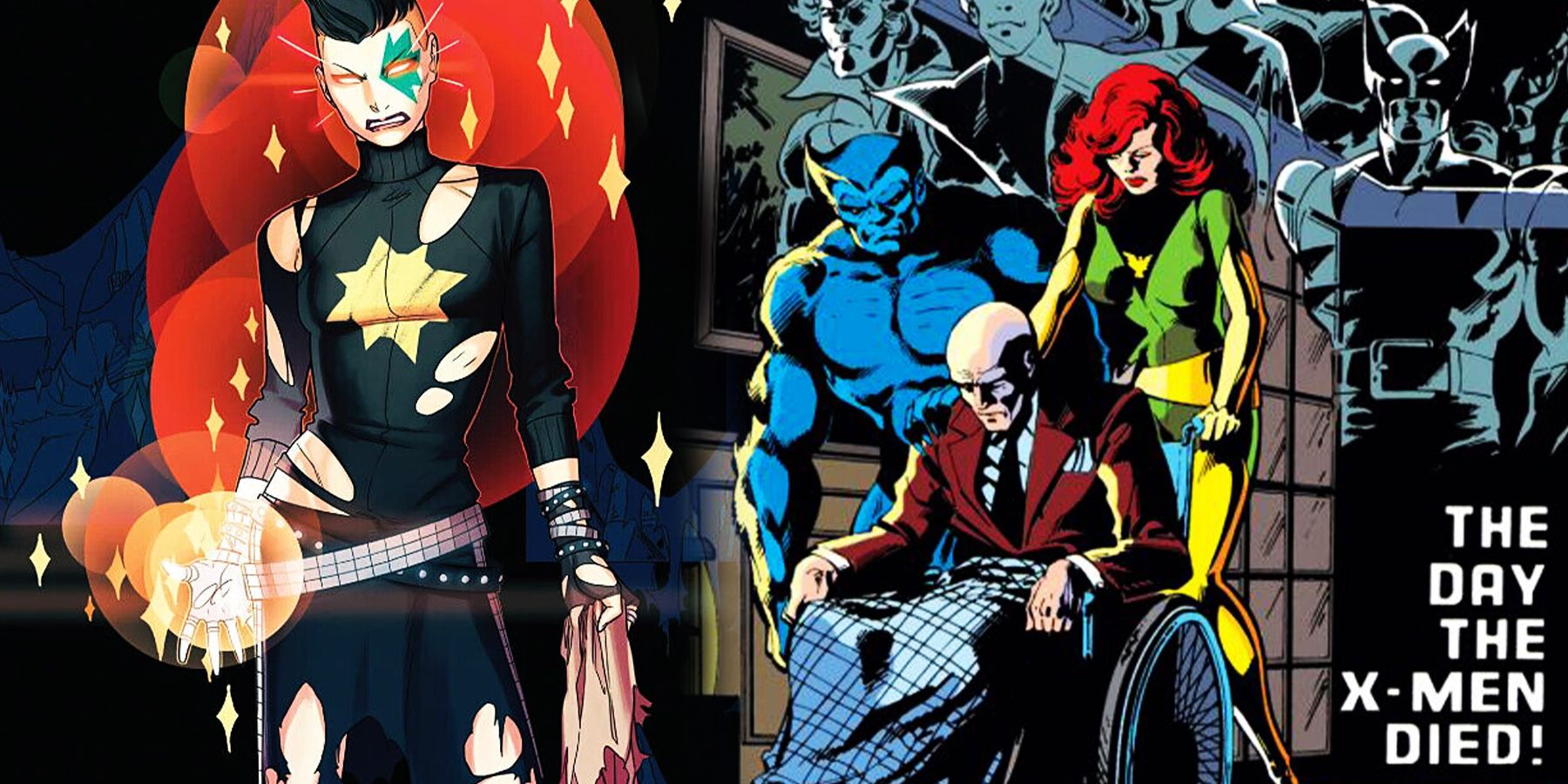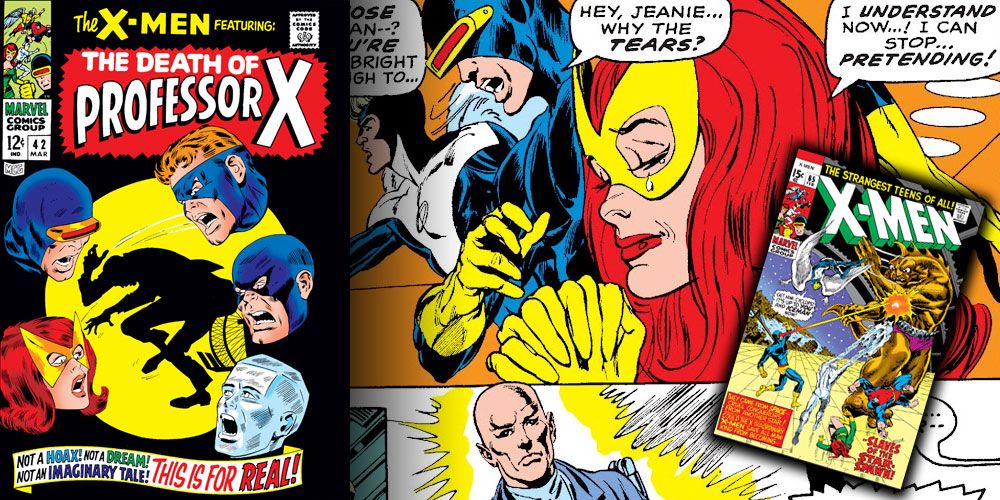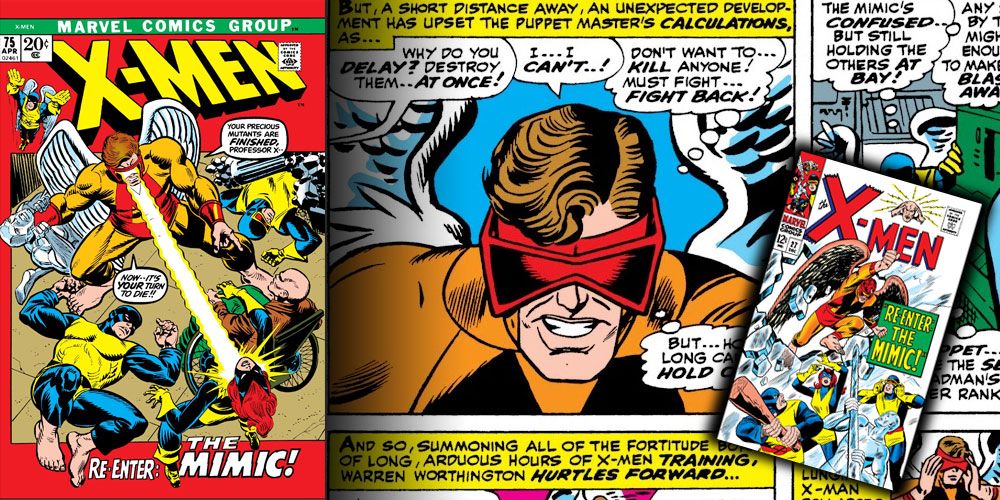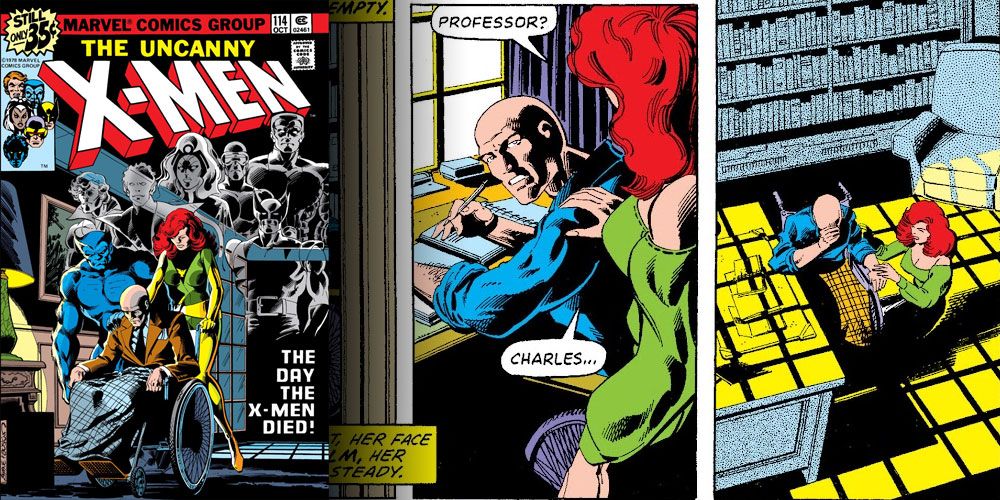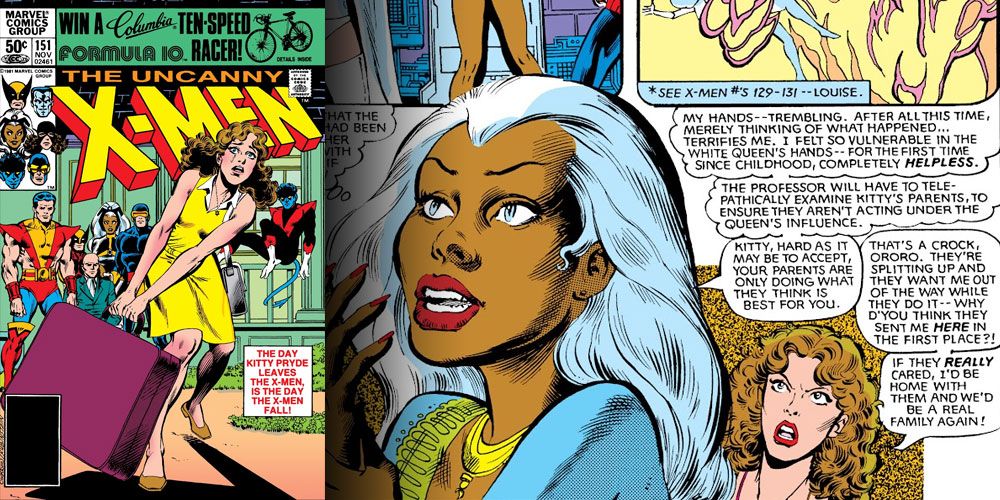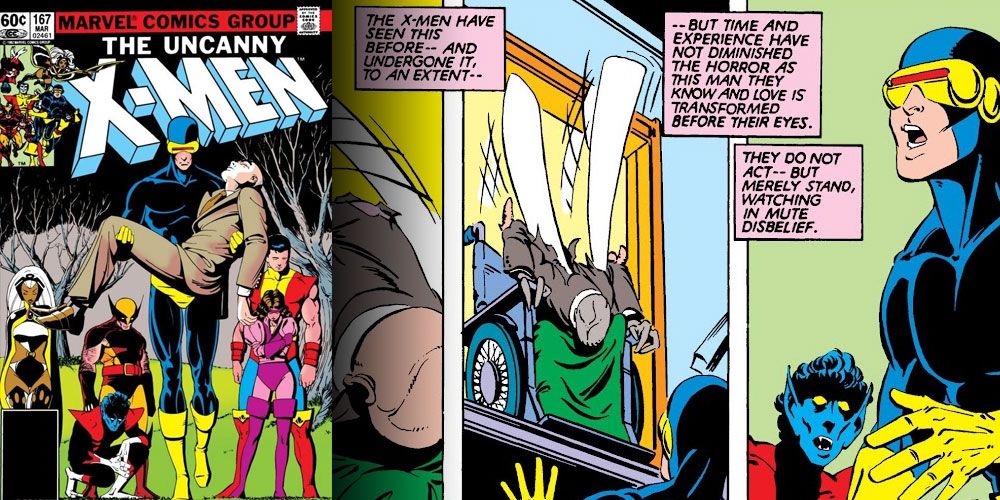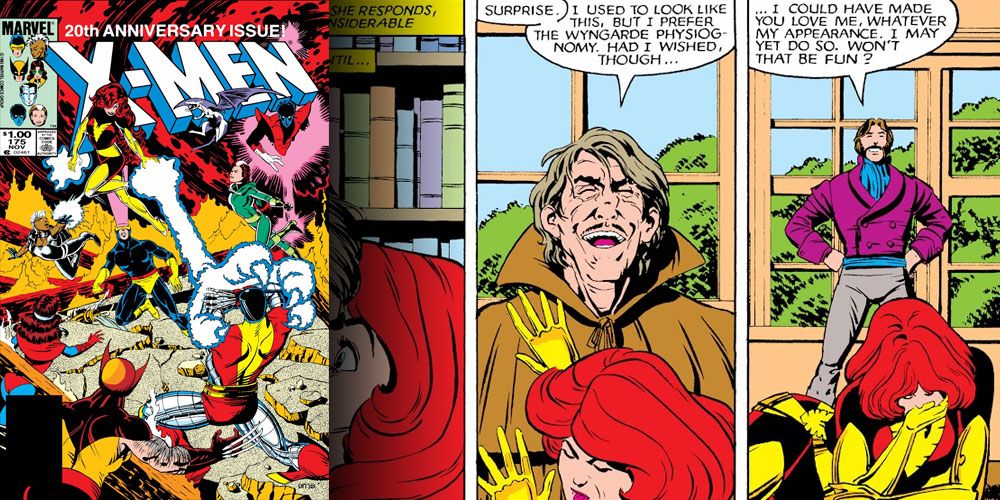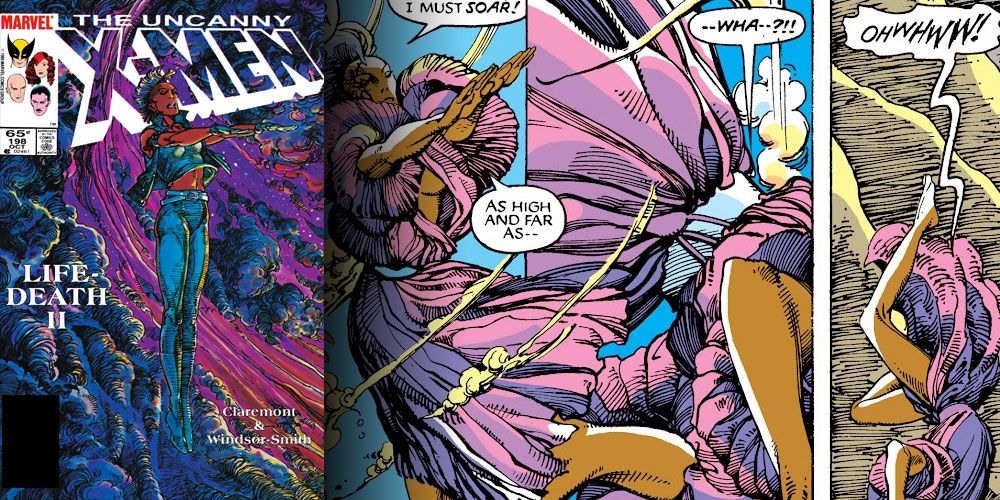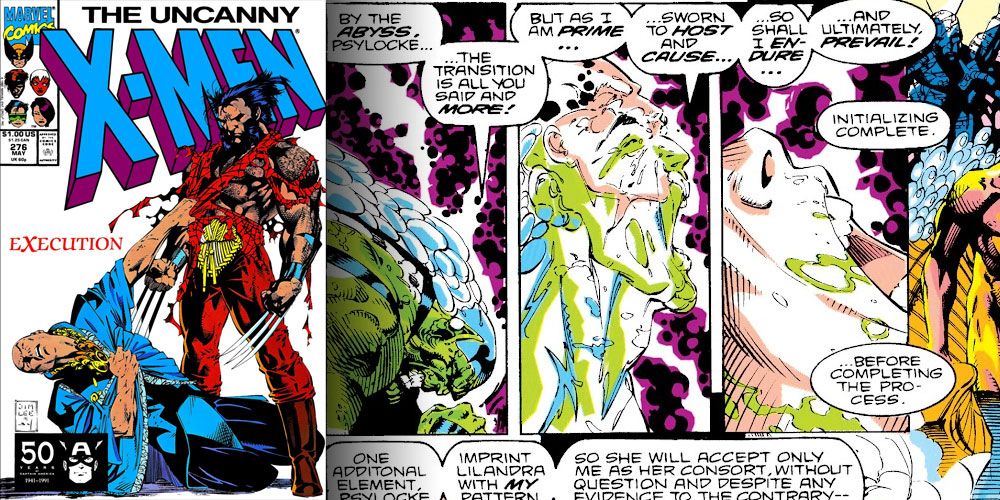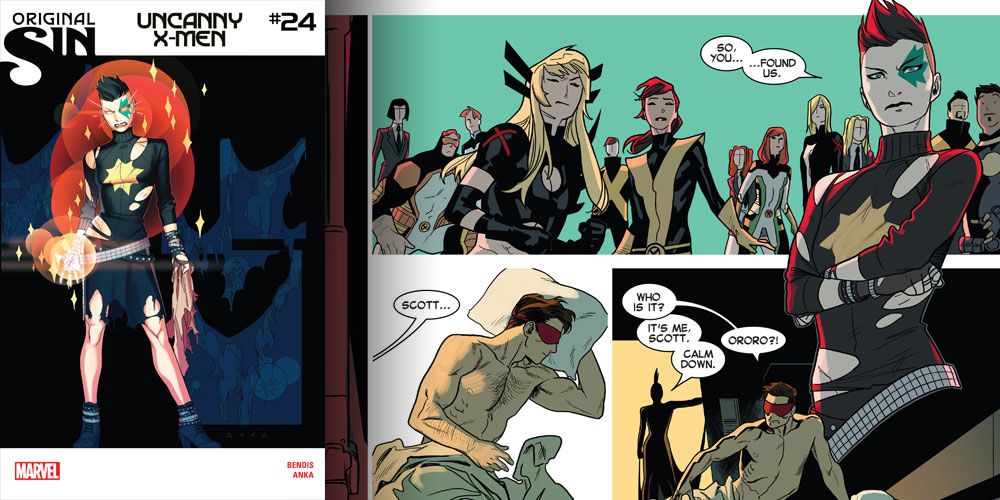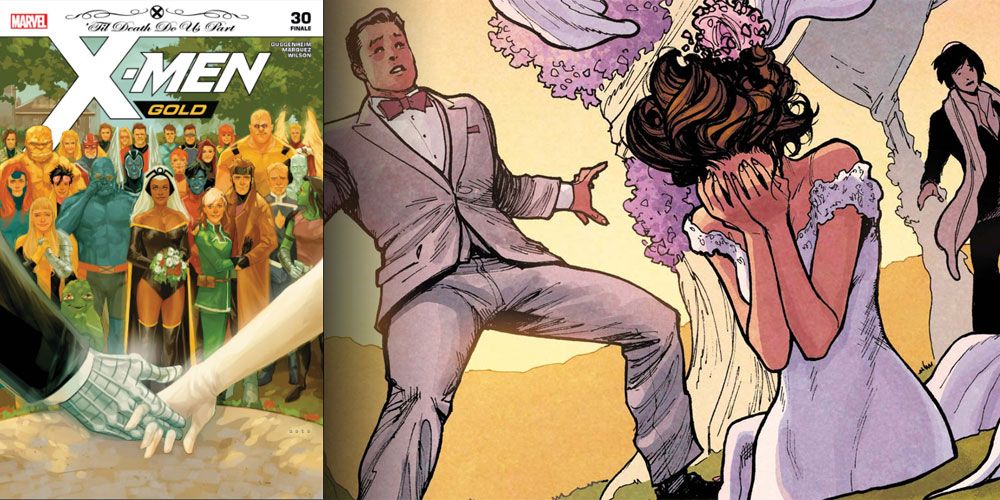A comic cover's purpose is to get a reader to pick up the book. This is especially the case for someone who hasn't read the comic before. In the case of the X-Men, it's generally assumed that the casual comic book fan knows who the X-Men are.
Successful comic covers bring sound art to the table, complete with solid designs, colors, and balance. To captivate readers, comic covers will tease conflicts, but they don't always deliver what they promise. Over the X-Men's sixty years of publication, there have been many misleading comic covers, but only a few where the art elevated the misleading cover to the stuff of legend.
10 X-Men #42 Teased The Death Of Professor X
Released March 1968, cover art by John Buscema, Marie Severin, John Verpoorten, & Sam Rosen
Crafted by Roy Thomas, Don Heck, George Tuska, and Sam Rosen, X-Men #42 features a beautiful, striking, graphic cover. It screams at the reader that this isn't a hoax, a dream, or an imaginary story. It depicts the X-Men shocked at the silhouetted death of the man who has taught them for years. Within the issue itself, it even seemed genuine, but it proved to be a bait and switch.
In X-Men #65 (by Dennis O'Neil, Neal Adams, Tom Palmer, and Jean Izzo) Professor X returned, having faked his death to prepare for the invasion of the warlike Z'Nox race. Jean Grey even revealed she'd known all along that the Professor faked his death. Whether Roy Thomas always intended the deception or if Neal Adams later pitched the idea remains unknown.
9 X-Men #75 Worked Better For A Reprint Of Another Issue
Released April 1972, cover art by Gil Kane, John Romita, & Sam Rosen
During the dawn of the Bronze Age, X-Men became a reprint title, along with the style of Marvel Tales and Marvel Super-Heroes. X-Men #75 reprinted the story from X-Men #27 by Roy Thomas, Werner Roth, Dick Ayers, and Sam Rosen. It sported a new cover that's as amazing as any cover drawn by Gil Kane in this era.
The only problem with X-Men #75's cover is the dialogue, where Mimic threatens to kill the X-Men. While the Puppet Master is controlling Mimic, he doesn't espouse homicidal tendencies. This cover actually works better for X-Men #69, which reprinted the debut of Mimic as an X-Men foe.
8 Uncanny X-Men #114 Was The Day The X-Men Died, But Not Really
Released October 1978, cover art by John Byrne, Terry Austin, & Danny Crespi
Crafted by Chris Claremont, John Byrne, Terry Austin, Glynis Wein, Jean Simek, Gaspar Saladino, and Danny Crespi, the cover for Uncanny X-Men #114 features a beautiful and somber image of Phoenix, Beast, and Professor X mourning the loss of the rest of the new X-Men. Meanwhile, the missing X-Men are lurking behind Phoenix and Professor X almost like ghosts.
The previous issue separated the X-Men and Phoenix. Phoenix and Beast survive to tell Professor X that they believe they lost the entire team. The team itself makes its way into the Savage Land, staying with one of the primitive tribes there. For a moment, a reader can ponder where the story would've gone if Chris Claremont and John Byrne had actually taken the bold step to kill most of the X-Men.
7 Uncanny X-Men #151 Revealed Kitty Pryde Leaving The X-Men
Released November 1951, cover art by Dave Cockrum & Joe Rubinstein
The cover for Uncanny X-Men #151 (by Chris Claremont, Jim Sherman, Bob McLeod, Josef Rubinstein, Bonnie Wilford, Tom Orzechowski, and Dave Cockrum) became iconic among superhero comics. Kitty Pryde's struggle to carry her suitcase is symbolic of the baggage she carries with her in this issue. Often overlooked, Kitty's parents are in the middle of a divorce.
This too weighs hard on Kitty Pryde, and Dave Cockrum reveals the character's pain in her face and through her body language. Of course, Kitty didn't leave the X-Men. It was all a plot by the Hellfire Club to gain revenge on the X-Men. Thir plan failed, but judging by this cover, it looked like they succeeded.
6 Uncanny X-Men #167 Had Professor X Die... Again
Released March 1983, cover art by Paul Smith
Crafted by Chris Claremont, Paul Smith, Bob Wiacek, Andy Yanchus, Glynis Wein, and Tom Orzechowski, Uncanny X-Men #167 is another cover where Professor X dies. This one presents the X-Men in mourning for their mentor. Paul Smith places everyone standing on the bottom edge of the cover, grounding them in reality. Everyone shares the same sense of loss as if in shock.
Saying that Professor X doesn't die is an understatement. As the story unfolds, it looks like he might, as a Brood Queen has used the Professor's body for its metamorphosis. Cyclops refuses to give up if there is a chance of saving Charles Xavier. Shi'ar science comes to the rescue, cloning a new body for the Professor.
5 Uncanny X-Men #175 Depicted The X-Men Battling Dark Phoenix
Released November 1983, cover art by Paul Smith
Paul Smith's cover of Uncanny X-Men #175 (in collaboration with Chris Claremont, John Romita Jr., Bob Wiacek, Glynis Wein, and Tom Orzechowski) depicts the X-Men fighting Dark Phoenix in flaming wreckage. The wreckage symbolizes how Mastermind hopes to leave the X-Men in ruins. Most importantly, the cover depicts Dark Phoenix as the same size as the X-Men.
This is the giveaway that the power the X-Men face isn't the cosmic power of Dark Phoenix. After Jean Grey's supposed death, Scott Summers fell in love with Madelyne Pryor, a woman who could've been Jean's twin. In the anniversary special, Madelyne appeared to be the reincarnation of Dark Phoenix. It was actually Mastermind out for revenge.
4 Uncanny X-Men #198 Teased That Storm's Powers Had Returned
Released October 1985, cover art by Barry Windsor-Smith
Barry Windsor-Smith worked on two fantastic Uncanny X-Men stories centered on Storm. For the cover of Uncanny X-Men #198 (in collaboration with Chris Claremont and Tom Orzechowski), he created an iconic image of Storm in her old costume, surrounded by clouds. If anything gives away the misleading nature of the cover, it's the dark colors in the clouds.
For the sequel to the first Lifedeath, Chris Claremont took Storm back to Africa, now facing widespread drought and famine. Injured and dehydrated, Storm hallucinates, believing her powers have returned. What follows is Storm finding the will to carry on, even without her powers.
3 Uncanny X-Men #276 Showed Professor X Dying Once Again
Released May 1991, cover art by Jim Lee, Scott Williams, & Pat Brosseau
Jim Lee's arrival on Uncanny X-Men made for a series of very dynamic covers. The cover of Uncanny X-Men #276 (created with Chris Claremont, Scott Williams, Joe Rosas, and Pat Brosseau) is no less dynamic with its two figures on a stark white background. Wolverine stands over the falling body of Charles Xavier, the victim of Wolverine's fury.
It shouldn't be surprising that this cover is misleading. Skrulls have infiltrated the Shi'ar, duplicating many, even Charles Xavier and his telepathic powers. Wolverine catches the difference and kills the imposter. Later in the issue, the Skrull leader takes Xavier's form to continue the deception.
2 Uncanny X-Men #24 Featured Dazzler On The Cover, But Barely Inside
Released September 2014, cover art by Kris Anka
If the cover of a team book features a character by themselves, one could assume that the story inside features that character. In the case of 2014's Uncanny X-Men #24 (by Brian Michael Bendis, Kris Anka, and Joe Caramagna), that would be an incorrect assumption.
The Original Sin cover dress should give away that fact, but it features Dazzler's new, punk-inspired look. Dazzler only has two word balloons in Uncanny X-Men #24. With one exception, if she appears, she's in the background. That doesn't change Kris Anka's skill at providing a cover that presents Dazzler in a new light.
1 X-Men Gold #30 Was The Ultimate Bait And Switch Unless You Were Paying Attention
Released August 2018, cover art by Phil Noto
Marvel had been hyping Colossus and Kitty Pryde's wedding for a while, and X-Men Gold #30 (by Marc Guggenheim, David Marquez, Matthew Wilson, Cory Petit) promised a beautiful ceremony. Interestingly, this comic came out around the same time that Batman and Catwoman's wedding fell through, which angered many fans.
While Kitty and Colossus didn't tie the knot, Gambit and Rogue finally marrying by the end of the comic lessened the fact that the promised wedding didn't happen. Phil Noto's cover leaves brilliant clues. Kitty's hand phasing through Colossus's hand gives the twist away. Inside, Kitty leaves him at the altar after phasing to avoid the wedding ring going on her finger. Also on the cover are the people actually getting married, standing together as if they're on top of a wedding cake.

